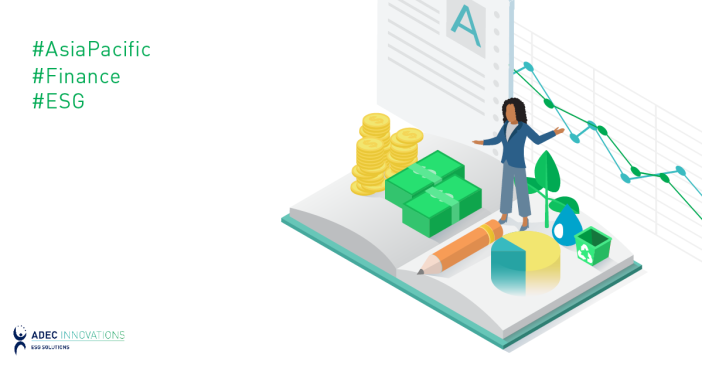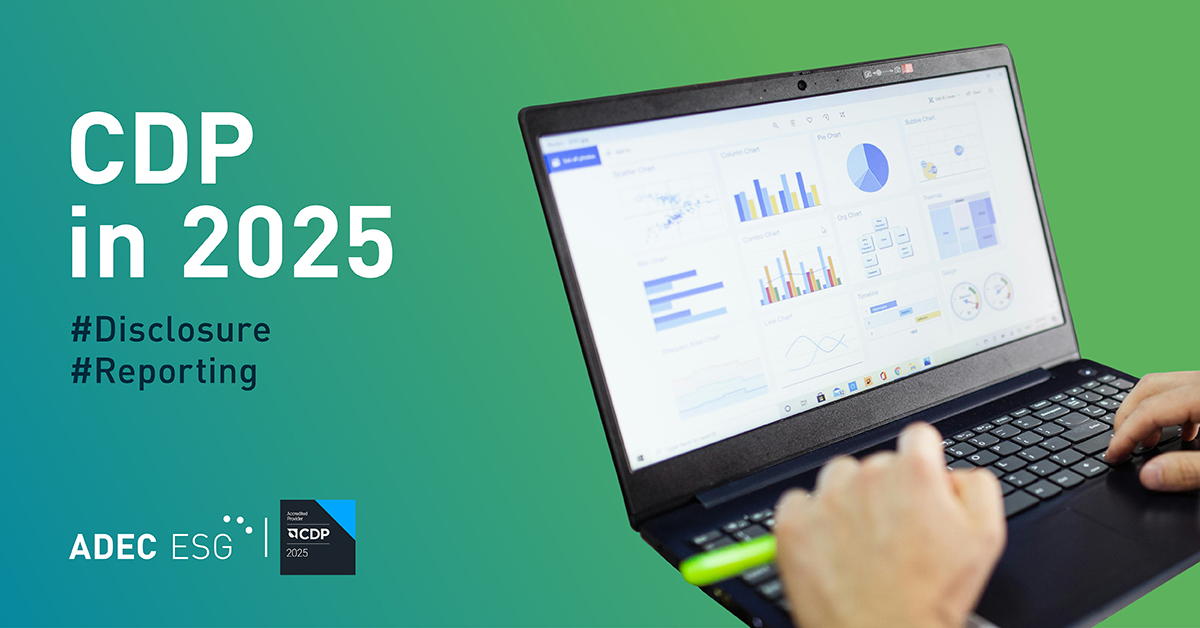To date, over 120 asset managers responsible for $43 trillion in assets have pledged to achieve carbon neutral investment strategies by 2050 or sooner.
With COP26 placing a focus on sustainable investing, the finance sector is expected to play a crucial role in achieving global net-zero targets. It is crucial for Asia to lead the way in ESG (environmental, social, governance) adoption and green finance, as the region is expected to drive more than two-thirds of global new energy demand over the next 20 years.
Last month, we partnered with CohnReznick and Sandpiper Communications on a webinar presenting ESG trends for the finance sector in the Asia-Pacific region. How can organizations adapt and implement ESG practices to position themselves as thought-leaders? What actions can you take to support responsible growth? Read on for a recap of some of the main points, or check out the full webinar and Q&A session here.
What’s driving ESG in the Asia-Pacific region?
International regulation and mandates
As we’ve discussed, the ESG reporting space started off decades ago with voluntary ESG reporting indices like CDP and EcoVadis, presenting information primarily targeted toward external stakeholders. Since then, public and private demand for greater accountability has accelerated, and with this demand we see the development of the ESG regulatory space such as the EU Sustainable Finance Disclosure Regulation, the EU Taxonomy, and Hong Kong and New Zealand’s mandatory TCFD reporting.
Pressure from investors
ADEC ESG’s Kendal Moir (ESG Program Manager, ANZ) discussed the ways investors are pushing companies to increase the rigor and performance behind their data and reporting. This is due to a combination of factors, including an increasing stakeholder interest in sustainability, a more demanding regulatory space, and the fact that intentional, data-backed ESG strategies also lead to greater resilience in the long-term.
Stock exchange norms
More than 60 stock exchanges worldwide include written ESG guidance, which often references reporting frameworks such as the GRI, SASB, CDP, and the TCFD.
Nation-level commitments and national plans
About 137 countries have committed to carbon neutrality, many of which have 2050 as their target date. These country-level goals and roadmaps have and will continue to impact on the organizations that operate within these nations.
Competitive advantage
Much of sustainability reporting is centered on risk analysis, planning, and mitigation. Detailed reporting provides a framework around which companies must collect data, understand that data, and subsequently create strategies for long-term resilience and growth based on the results. Though reporting mandates and pressure to track sustainability KPIs may seem onerous, the knowledge gained through the reporting process can give you a competitive edge by helping you to identify risks or gaps and stimulate mitigation strategies.
Industry collaborations and PPPs
Country-level decarbonization and sustainability-aligned national plans are pushing government agencies at every level to rethink and rework how they operate. In many cases, this creates opportunities for private organizations to collaborate—with others in the private sector and also with the public sector—to drive sustainable practices and initiatives within their industries and communities.
What’s trending in ESG for the financial services sector?
The Task Force on Climate-Related Financial Disclosures
Though the TCFD recommendations were initially published as voluntary recommendations on climate-related financial disclosures, its concepts have quickly become integrated into many international reporting standards, such as CDP, MSCI, and GRESB. The number of TCFD-supporting companies has grown exponentially in recent years, from less than 500 companies in 2017 to more than 2,600 in 2021. In addition, according to TCFD’s 2021 status report, 12 governments and dozens of central banks and regulators now support and endorse the TCFD recommendations. In fact, many of these institutions have embedded these recommendations into their own official disclosure requirements, including the Financial Conduct Authority (UK), the Financial Services Agency (Japan), the Government of New Zealand, the Swiss Federal Council, and many others. In June 2021, all G7 countries also agreed to mandate reporting requirements aligned with the TCFD recommendations.
Calculating climate-related financial impacts is incredibly important—both for the sake of mitigating climate change and to help organizations understand potential climate risks, how they may change over time, and how to mitigate those risks under different degrees-scenarios. Aligning with the TCFD recommendations also aids in increasing transparency, improving stakeholder relationships, and helping companies with long-term financial planning.
Setting science-based targets
The Science Based Targets Initiative helps organizations set targets to reduce emissions in line with the Paris Agreement. These include sector-based targets, such as those for financial institutions, known as “sector decarbonization alignments.” Setting science-based targets are particularly important for the finance sector because, by their nature, financial organizations have a far-reaching value chain. A robust GHG inventory accounts for all emissions within this value chain, including emissions generated through direct operations, upstream and downstream leased assets, and investments. Science-based targets ensure that companies are accounting for all relevant sources so that ambitious, meaningful targets can be determined and set.
Measuring and monitoring scope 3 emissions
Through drivers like investment activities, the finance sector has the unique ability to influence how upstream and downstream organizations integrate ESG programs and strategies., It is therefore particularly important for this sector to report on not only direct emissions (scope 1 and 2) but also indirect emissions (scope 3). Regulators are increasing their focus on scope 3 emissions, as they often have a much higher impact than scope 1 and 2 combined.
How has ESG data tracking changed? What does this mean for the future?
Reporting companies face an often crowded and confusing landscape of more than 600 ratings and rankings standards. These include standard setters like SASB and GRI, international guidance like the TCFD recommendations and UN SDGs, and rating agencies such as CDP and Sustainalytics. The world of ESG standards is constantly refining its methods, changing, and evolving, and one of the biggest challenges reporting companies face is creating a data ecosystem that can keep up with this rate of change.
During the webinar, Tama Huang (Chief Innovation Officer, CohnReznick) discussed different types of data as well as the maturity of data. While it often seems easier to quantify, measure, and track visible progress on many of the “E” topics in ESG—such as emissions, water use, and energy efficiency—many companies find it difficult to set solid targets related to social and governance factors. “Trying” to increase leadership diversity or “paying more attention to” equity within the organization are often set as “S” and “G” goals, which are almost impossible to measure the success of or progress towards since they are neither measurable nor quantifiable. As the market shifts towards greater demands for transparency and accountability, companies need to find ways to more precisely set and monitor KPIs through better data management.
What role do corporate governance and communication play?
Kelly Johnston (COO and General Manager, Southeast Asia, Sandpiper Communications) reported Sandpiper’s latest research on “reputation capital,” which surveyed 6,000 consumers across the Asia-Pacific region in late 2021. Their research found that corporate citizenship—including environmental, social, and economic issues—was rated as “very important” in shaping one’s opinion of an organization with more than 80% of all those surveyed. Research also found that individuals preferred to engage with brands that shared their beliefs in a way that was meaningful.
Get all the details on specific examples, research studies, and more by watching the full webinar here.
Additional findings showed consumers are looking for honesty and transparency from brands, above all other factors, and particularly in crisis situations such as a global pandemic. Taken together, it is clear that every industry, including the finance sector, should develop robust data management systems in order to accurately monitor and report on targets—but those targets must be visible and clearly communicated. Ultimately, the most strategic approach to ESG is an integrated one: holistically designed from the inside out.
Want more than just the highlights? We take a deeper dive into each topic on the full webinar. Access the recording, including a Q&A session with the audience, by clicking here.




